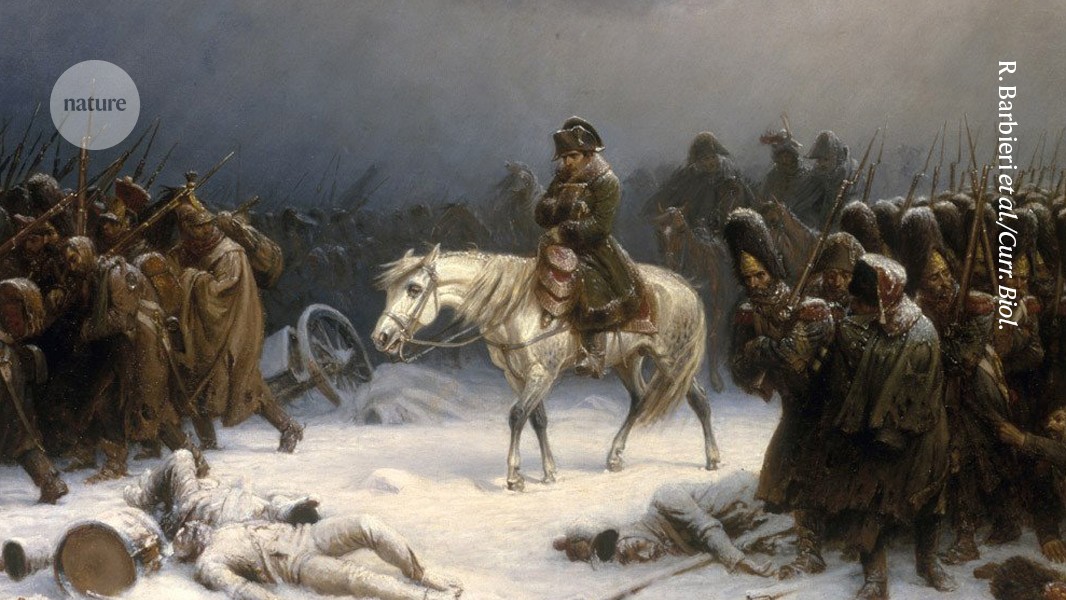A couple of months ago, when we first heard about The Life of a Showgirl, Taylor Swift’s heavily hyped 12th album of new material, on an episode of her fiancé Travis Kelce’s podcast, we were told it contained all “bangers.” This was interpreted to mean reliably catchy, super-accessible pop of the kind she did a decade ago on her blockbuster album 1989, which would differentiate the LP from her recent, more contemplative output. I’d like to trouble that thesis with a quick longitudinal study.
So here goes: Eight of Swift’s last nine studio albums led off with a No. 1 hit on Billboard’s Hot 100. Let’s consider these leadoff singles in two sets: the 2010s and the 2020s. (Though Swift has racked up further No. 1s deeper into her album promotional campaigns, I’m focusing on first singles.) Here’s the first set, Taylor’s album-leading No. 1 hits of the 2010s:
A footnote to the ’10s list: In 2019, Swift would have scored another album-leading No. 1—Lover’s “ME!” featuring Brendon Urie of Panic! at the Disco—if it hadn’t gotten stuck at No. 2 behind the chart-conquering streamroller that was Lil Nas X’s 19-week No. 1 “Old Town Road.” So, though “ME!” is one of the least-loved Taylor hits, let’s tack it onto the above list as a not-so-honorable mention.
Play those four 2010s smashes back-to-back, and a picture emerges of a young woman who loves frothy, peppy bops—from the bordering-on-pop-punk verve of “We Are Never Ever Getting Back Together” to the cheerleader chant of “Shake It Off.” Even the spookiest, 2017’s spiteful “Look What You Made Me Do,” is uptempo and sparkly, borrowing its chorus cadence from Right Said Fred’s camp classic “I’m Too Sexy.” Bottom line, when Swift pivoted from country to pop, she went pop—maximally, for most of a decade.
Now, consider this other list. These are Swift’s album-leading No. 1s of the 2020s. Notice anything different?
-
“Cardigan” (from Folklore, one week at No. 1, 2020)
-
“Willow” (from Evermore, one week, 2020)
-
“Anti-Hero” (from Midnights, eight weeks, 2022–23)
-
“Fortnight” (from The Tortured Poets Department, two weeks, 2024)
-
“The Fate of Ophelia” (from The Life of a Showgirl, two weeks to date, 2025)
Play these five songs back-to-back, and a picture emerges of a sullen, cerebral songwriter who pairs melodic tropes from folk or indie-rock with grown-ass-woman ruminations—from the world-weary feminism of “Cardigan” to the listless longing of “Fortnight.” The biggest hit here, 2022’s “Anti-Hero,” despite sporting one of Swift’s most irresistible melodies, is still a dark, sighing, self-denigrating therapy session (whence came the would-be catchphrase “I’m the problem, it’s me”). Bottom line, when Swift reached her 30s and her post-pandemic worldview turned broody, she stayed broody.
That broodiness extends to our current No. 1 song, the lucky 13th No. 1 of Taylor Swift’s career. We were told Swift’s reunion on Showgirl with Max Martin and Shellback—the Swedish producers and songwriters behind her biggest hits a decade ago—was going to augur a comeback for sparkly, spunky ’10s Taylor. And yet, here we are, still rocking with moody, broody ’20s Taylor. I mean, is a song named after the poor girl who went mad in Shakespeare’s Hamlet your idea of spunk?
Make no mistake, “The Fate of Ophelia” is hella catchy—but then, so was “Anti-Hero.” Among Swift’s 2020s album-leading smashes, I would say “Ophelia” is her most banger-adjacent. But admit it, a couple of weeks ago, the first time you heard the opening seconds of the song—a mellow beat-drop seemingly cribbed from the top of Fleetwood Mac’s “Dreams,” followed by some very gentle piano chords—didn’t you think, “Huh … I guess we’re doing this again”? I know I did. There’s something both warmly familiar and dutifully predictable in Swift’s hitmaking. At this late Imperial stage in her career, the big revelations come from how she announces her albums (down to the color palette), not the sound of their lead singles.
In short, there is no mystery to why “The Fate of Ophelia” is No. 1. As I say in this Slate series every time Taylor Swift returns to the top of the Hot 100, it’s because she’s Taylor Swift, this is her world, and we are living in it. As the stats above also indicate, Swift’s chart-topping status is heavily frontloaded each time she drops an album—everybody shows up in week one, but how the LP and its songs fare commercially from there is more variable. Now that The Life of a Showgirl is more than two weeks old, we can assess just how much staying power this Era has. Short version: The album, as an album, seems to be falling off quickly. The singles … maybe not.
First, the album. When Showgirl made its debut last week, it opened to a record 4 million album-equivalent units (that’s traditional sales plus bundles of streams, as per Billboard’s math). That’s the biggest week of album consumption ever, or at least since the charts were computerized with Soundscan technology in 1991. And Taylor’s album-sales total included nearly 3.5 million in “pure” sales, which beats—hello!—the previous record-holder, nearly a full decade ago: the first week of Adele’s blockbuster album 25, which sold nearly 3.4 million copies back in November 2015.
I put the word “pure” in the previous paragraph in scare quotes, not because the sales figures Billboard reported are corrupt, but rather because Swift has advantages and (totally legal) ways to game the charts that weren’t available a decade ago. The biggest X-factor for Taylor in 2025 over Adele in 2015 is actually not streaming music. It’s vinyl. The comeback of the wax long-player was still in its infancy back then—in the first week of 25, which Adele did make available on vinyl, she sold a positively quaint 22,000 LPs, which at the time was the third-largest vinyl sales total in Soundscan history. A decade later, a number like that would be a rounding error for Sabrina Carpenter, let alone Taylor Swift. In its first week, Showgirl sold 1.3 million copies on vinyl alone. And did I mention all the variants? Swift sold eight varieties of Showgirl vinyl. Back in 2015, Adele wasn’t offering 25 in a variety of LP covers or colored vinyl. (Or even compact discs: Adele sold one standard CD package of 25; Swift sold 18 different CD packages.)
It’s safe to assume some significant percentage of Showgirl’s opening-week sales were hardcore Swifties who felt the need to, as they say on kiddie TV, Collect ’em all! Indeed, when Showgirl posted a gobsmacking tally of 2.7 million copies on its first day (!) the trades reported that the bulk of that sum was album preorders that shipped on day one—many via Swift’s own webstore, which surely included a lot of repeat buyers. (How many? We’ll never know.) After that blockbuster first day, when it became clear Adele’s sales benchmark was vulnerable, Team Swift pulled out all the stops, releasing new limited-edition CD variants midweek to goose her most loyal fans to buy, buy, buy again. The result: a final sales tally of 3.479 million, about 100,000 copies more than Adele’s 25 debut week, and also a whopping 80 percent higher than the opening sales of Swift’s own previous album, The Tortured Poets Department. Just absurd.
As Swift’s many friends and associates have reported over the years, Taylor likes to win. That includes on the charts. I’ve been asked in the past week, presumably by Adele fans: Is this fair? My short answer: Yes, with an asterisk. This is chart gaming, but it’s not payola—Swift’s sales tactics are pretty transparent, in all senses of that word. The only question was, by how big a margin. Sure, given all those vinyl and CD variants, there’ll always be an aftertaste on Swift’s sales achievement—much the way Lady Gaga’s Born This Way sold 1.1 million in its 2011 debut, but that milestone has a taint because Amazon deep-discounted the album at 99 cents (a then-chart-legal loophole that has since been closed by Billboard). It’s useful to know these footnotes for historical purposes, but both the Gaga album in 2011 and the Swift album in 2025 would have debuted at No. 1 in any case, by a huge margin.
And what about the Swift LP’s second week? Just as “what goes up must come down,” what opens bigger falls harder. In week two, Showgirl dropped 92 percent in album-equivalent units (the metric that includes streaming), from 4 million to 338,000, and dropped a stunning 97 percent in pure sales, from 3.5 million to just over 100,000. (Swift’s last two albums, Tortured Poets and Midnights, had sizable but more modest second-week drops.) This has prompted some commentariat froth that this drop affirms Showgirl’s fundamental weakness as an album, after a fortnight of grumbling over the album’s lack of actual bangers. I think the simpler explanation is that even Swift’s fandom has limits, and if you get more Swifties to buy early, you’ll find fewer converts down the road. However middling its reviews or checkered its legacy, The Life of a Showgirl will be fine.
That includes—oh yeah!—the songs, which are actually showing greater staying power on the Hot 100 than the haters might have expected. In week one, in another major chart feat that surprised absolutely no one, Showgirl’s 12 tracks instantly debuted in the top 12 positions on the Hot 100—the third straight time Swift has locked down the chart’s entire Top 10. (She is still the only artist to do this.) But the more impressive achievement this time is how the songs are holding on the charts. The previous two times Taylor dominated the whole Top 10, in 2024 with her Tortured Poets tracks and in 2022 with her Midnights tracks, a week later she retained less than half of the Top 10. This time, in week two, Showgirl tracks still take up eight of the Top 10. By the way, in case you’ve been debating the merits of the album’s songs and are curious now that the marketplace has spoken, America’s five favorite Showgirl album cuts (i.e., besides “The Fate of Ophelia”) are, in descending order: “Opalite” (which will almost surely be the second single), “Elizabeth Taylor,” “Father Figure,” “Wi$h Li$t,” and the gleefully raunchy, much-maligned “Wood.”
Among that assortment, “The Fate of Ophelia” emerges as the album’s median hit, a song that summarizes the whole Showgirl aesthetic: mellower than expected, deceptively optimistic. As I said earlier, broody contemplation has been Swift’s mode this whole decade, and “Ophelia” slots right into that meta-narrative. Just by invoking Shakespeare’s wronged, suicidal heroine—a woman who represents collateral damage to a man’s main-character syndrome—Swift is once again centering a kind of ruminative feminism in her pop, à la “Cardigan.” But the twist in the lyrics is that a considerate lover (one who wears tights like Hamlet but otherwise has little in common with the pensive Dane) has rescued Swift’s protagonist from becoming Ophelia: “And if you’d never come for me/ I might’ve drowned in the melancholy … You dug me out of my grave and/ Saved my heart from the fate of/ Ophelia.” Swift has been rewriting Shakespeare almost as long as she’s been writing songs. Way back in 2008, her No. 1 country hit “Love Story” reimagined Romeo and Juliet ending with a white wedding instead of a bloody dagger. “The Fate of Ophelia” finds Swift with a more mature worldview, but the song’s implied resolution is, once again, a wedding. It’s rather clever, the way it masks its starry-eyed buoyancy behind that almost goth title.
The buoyancy extends to the music, once you get past that misleadingly minor-key opening. The song’s synthy bassline is gently funky, its chorus yanking the song from sleepy to perky, like a cheerleader who’s taken Ritalin. The moment in “The Fate of Ophelia” you can tell Max Martin worked on it is actually the post-chorus—the bit that mathematically interpolates the refrain and puts an irresistible, chant-like button on it: “Keep it one hundred on the land (Land), thе sea (Sea), the sky/ Pledge allegiance to your hands, your team, your vibes.” As written English, it’s a mouthful that means very little (kinda like that Max Martin classic, “Ain’t nothin’ but a heartbreak … Ain’t nothin’ but a heartache”). Rhythmically, it’s the best part of the song. Among Swift’s oeuvre, it echoes the catchiest moment in the Martin-produced “We Are Never Ever Getting Back Together,” 13 years ago—the third line of that chorus that went, “You go talk to your friends, talk to my friends, talk to me.” Swift and Martin pull the same crowd-rousing, wave-your-arms-in-the-air trick in “Ophelia.” Mind you, I wasn’t in the room when Swift, Martin, and Shellback worked on this song, but Martin just seems to bring these satisfyingly symmetrical flourishes out of Swift. It all adds up to, if not a banger, a solid bop—Swift’s post-Folklore “indie”-pop run through the Max Martin machine. (Certainly not the first time Max has rebooted indie rock as mass-appeal pop.)
What does this mean for the song’s chart prospects? Right now, “The Fate of Ophelia” is No. 1 for the same reason “Cardigan” or “Willow” were No. 1—because it’s Taylor Swift. On streaming services, “Ophelia” opened to a record 92.5 million streams, the biggest weekly total of the 2020s, and is still putting up big streaming numbers (nearly 50 million in week two). But it’s not surprising that very online Swift fans are playing the hell out of it. Could “Ophelia” have the kind of lengthy Hot 100 run, with more casual listeners, of an “Anti-Hero”—which not only topped the chart for eight weeks but rode the chart for more than a year? Or is it more like last year’s “Fortnight,” which never quite caught on at radio and was off the chart in just a few months? Early signs are promising: On Billboard’s Radio Songs chart, “Ophelia” is already higher than “Fortnight” peaked—currently it has the fifth-biggest airplay audience overall (better than “Fortnight’s” No. 7 radio ceiling)—and that’s after just, well, a fortnight. It could wind up a sneakily resilient, mid-tier Taylor favorite.
But should she be aiming higher? Should we be invoking an earlier Taylor hitmaking era—the one everybody thought she was trying to evoke by bringing back Max and Shellback? Fans are understandably wistful for the mid-’10s days of epic Swift–Martin–Shellback smashes like “I Knew You Were Trouble,” “Blank Space,” “Style,” and “Delicate,” pop classics that rode the airwaves and the Hot 100 for six to nine months apiece. I’m nostalgic for that era, too, but I’m also glad Taylor moved on. If she had slavishly recreated the ’10s Taylor era beat for beat, the online hordes would probably be complaining about her creative stasis. “The Fate of Ophelia” is exuberant pop a thirtysomething would produce. As we critics often carp about Taylor, she needed to grow up. So, though she’s back in Maximalist (pun intended) pop mode, her sound is fundamentally that of a gimlet-eyed grownup. Even if it’s a grownup who’s still dreamily planning a wedding.
First Appeared on
Source link












